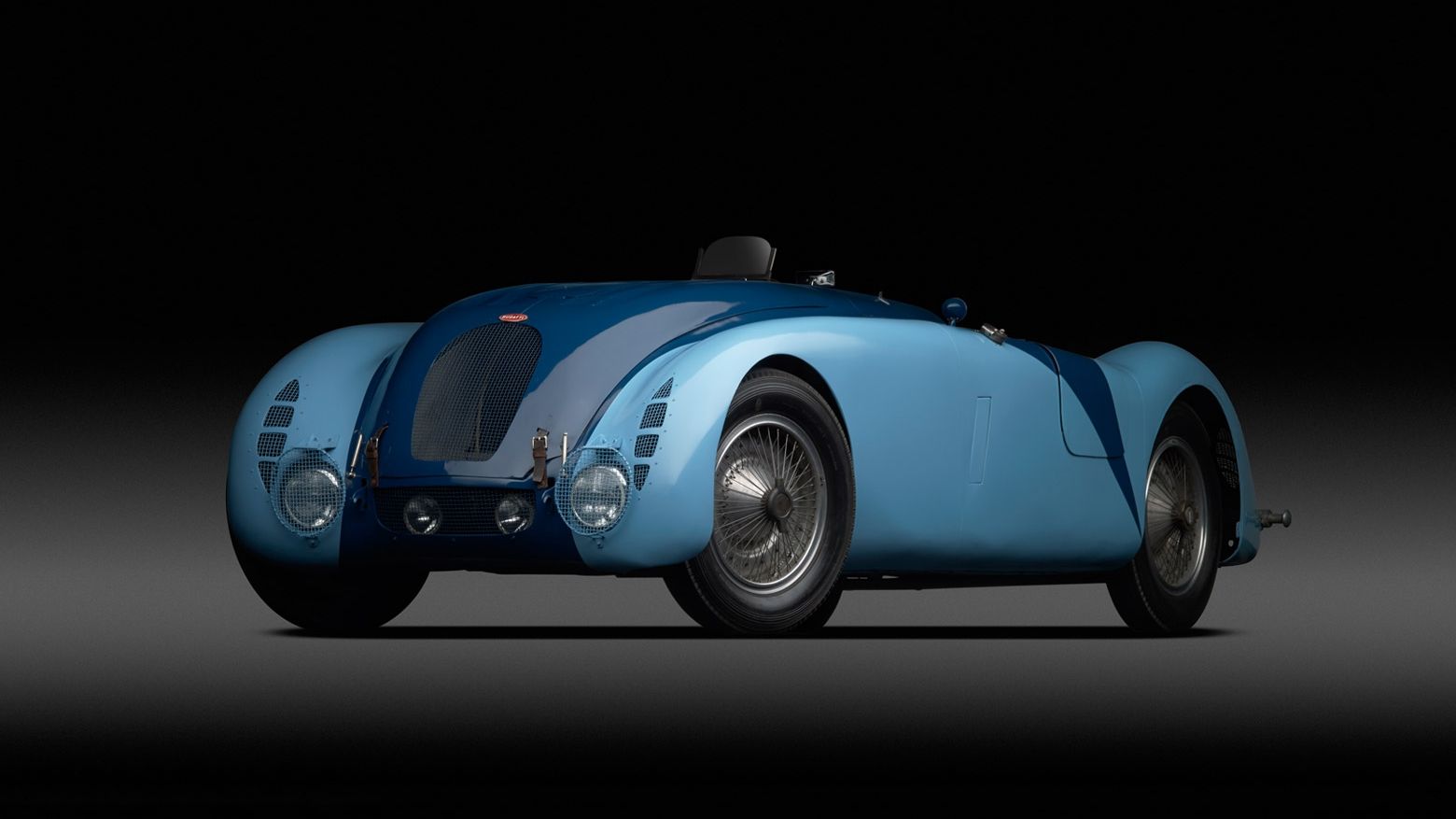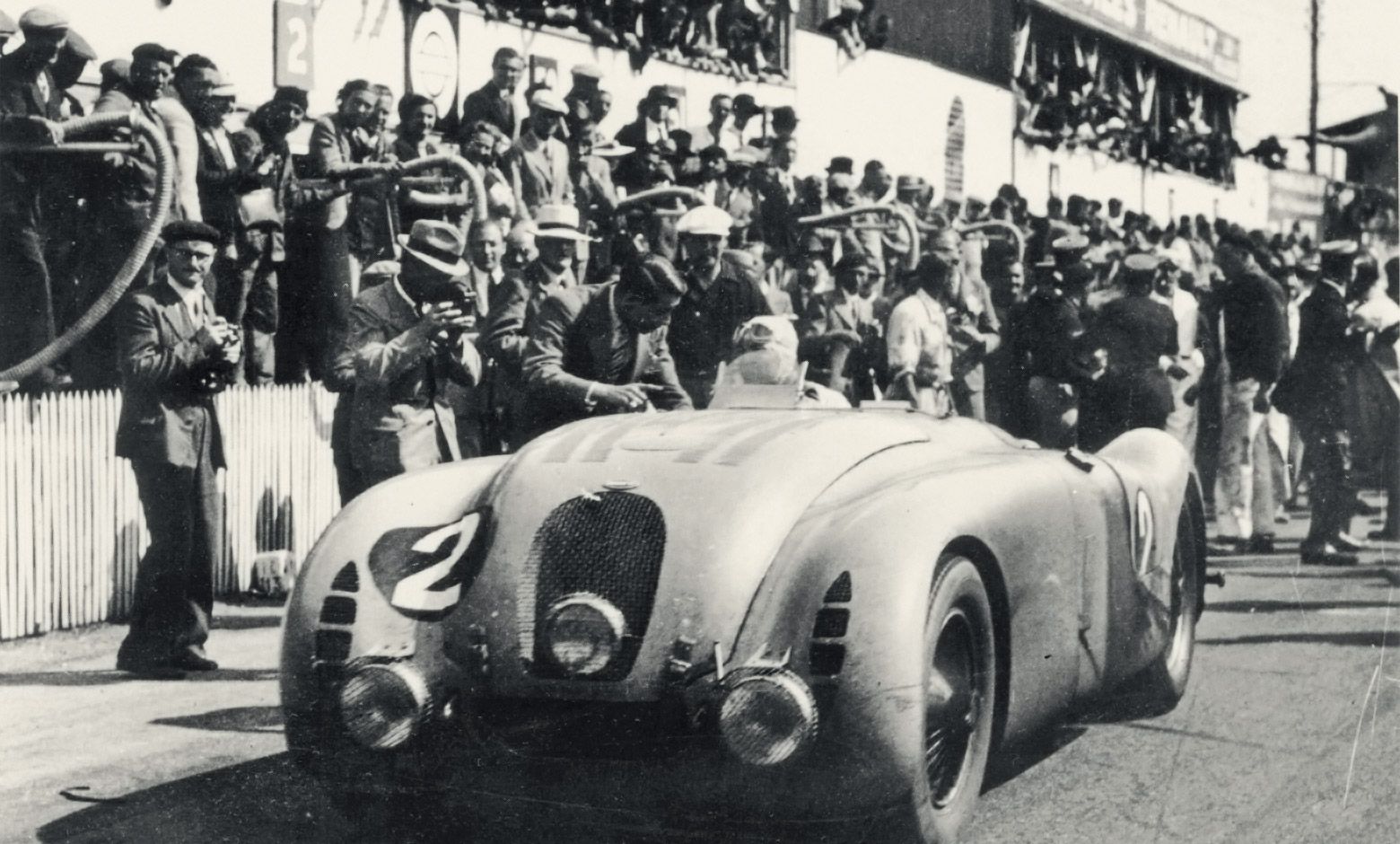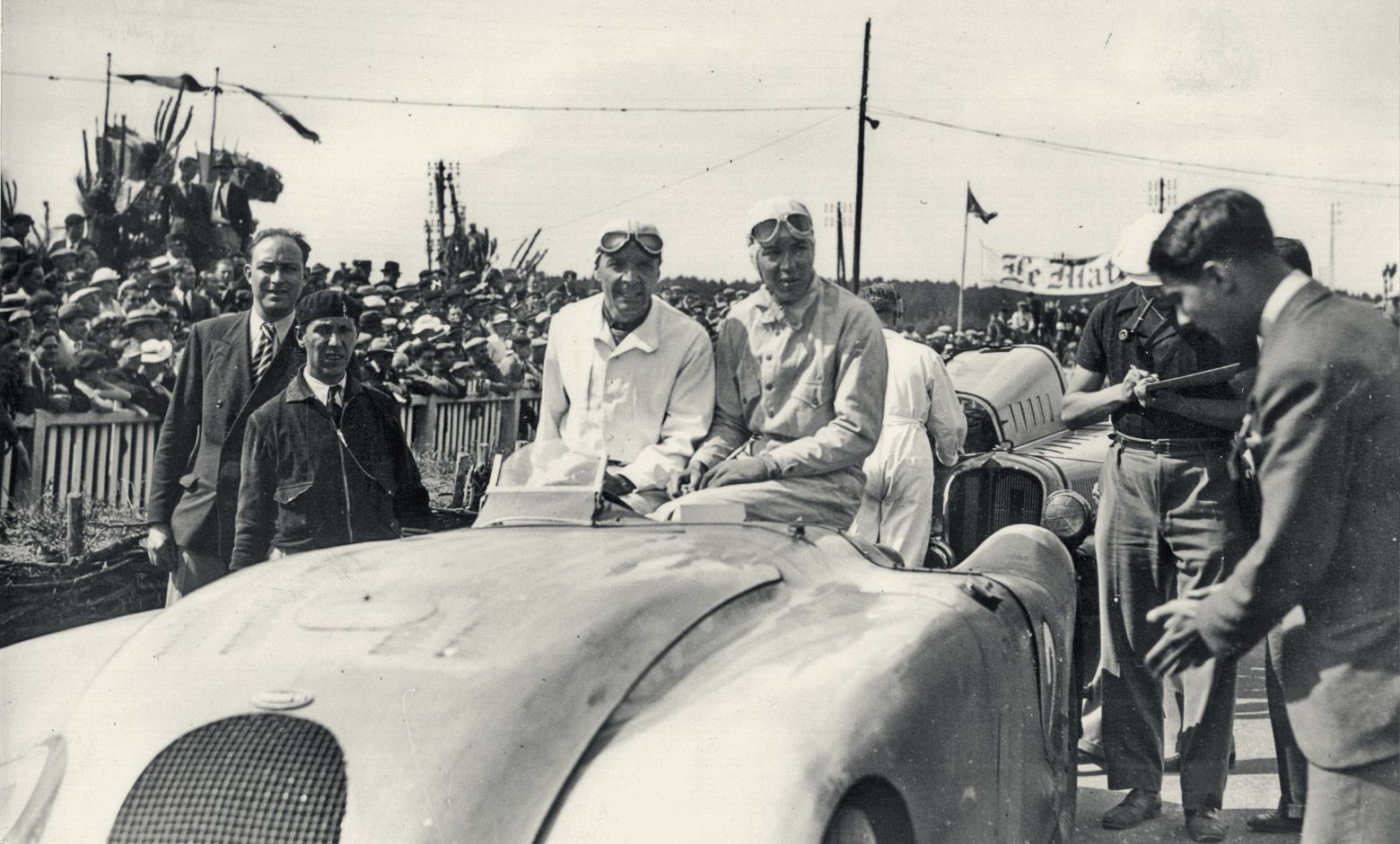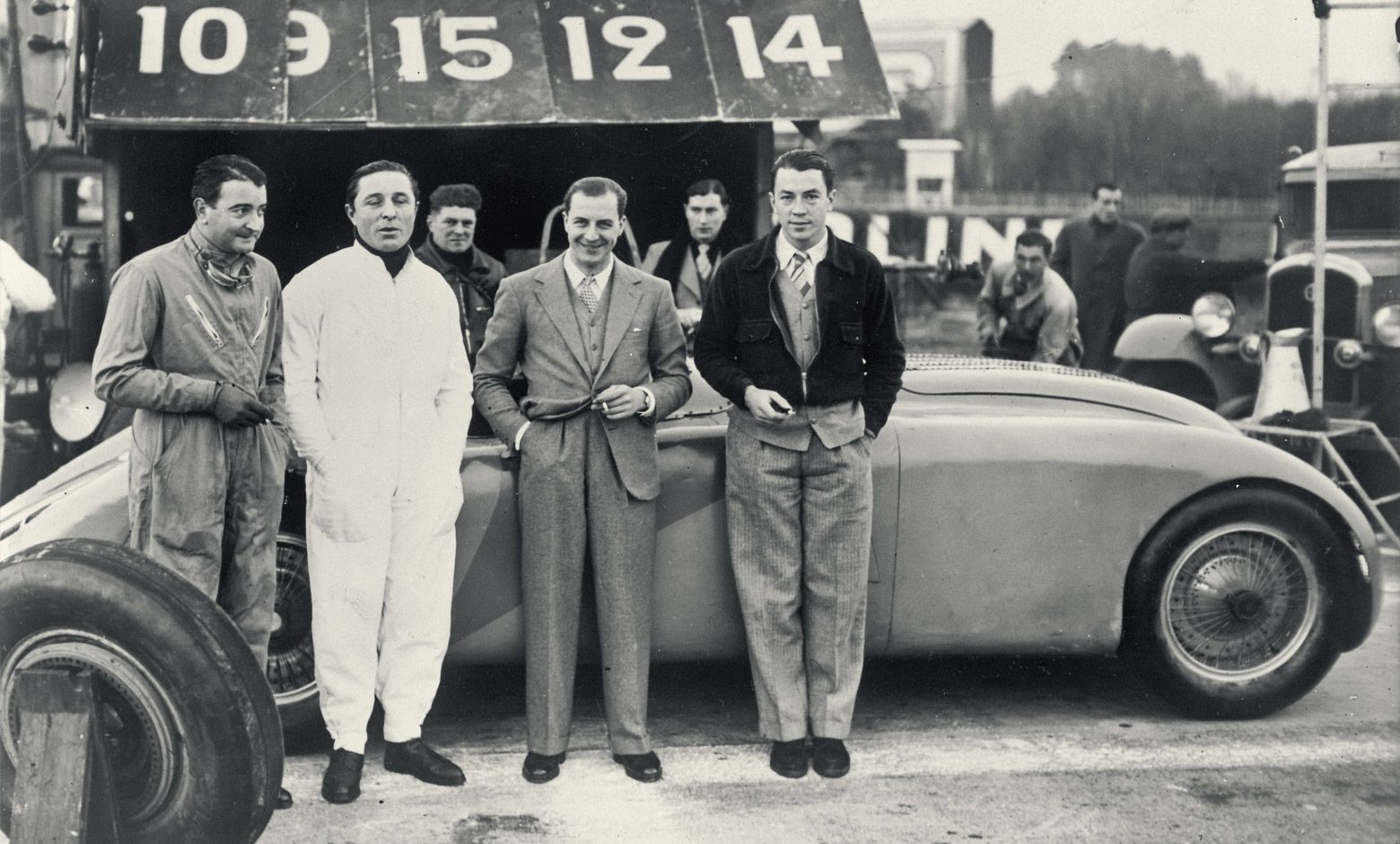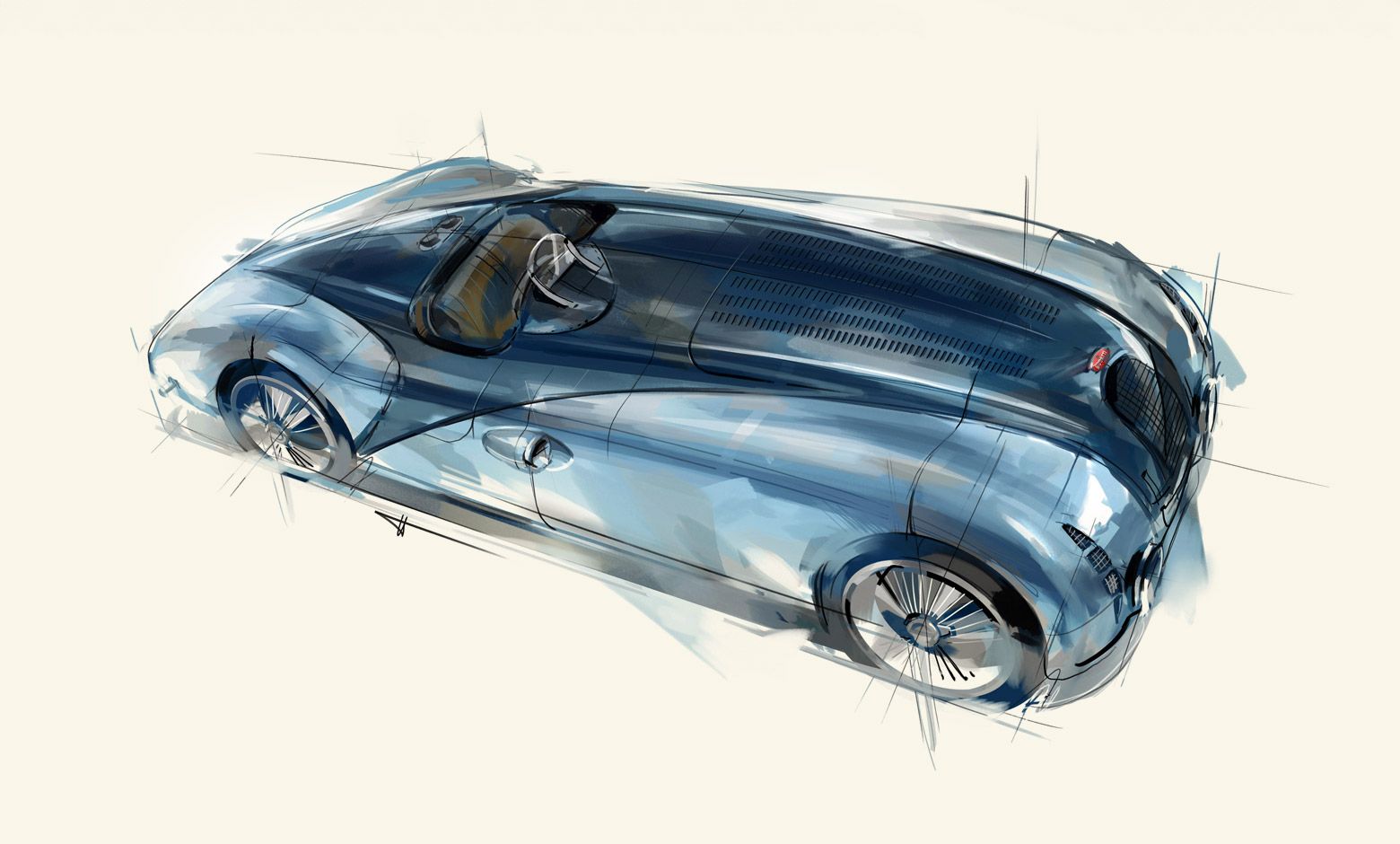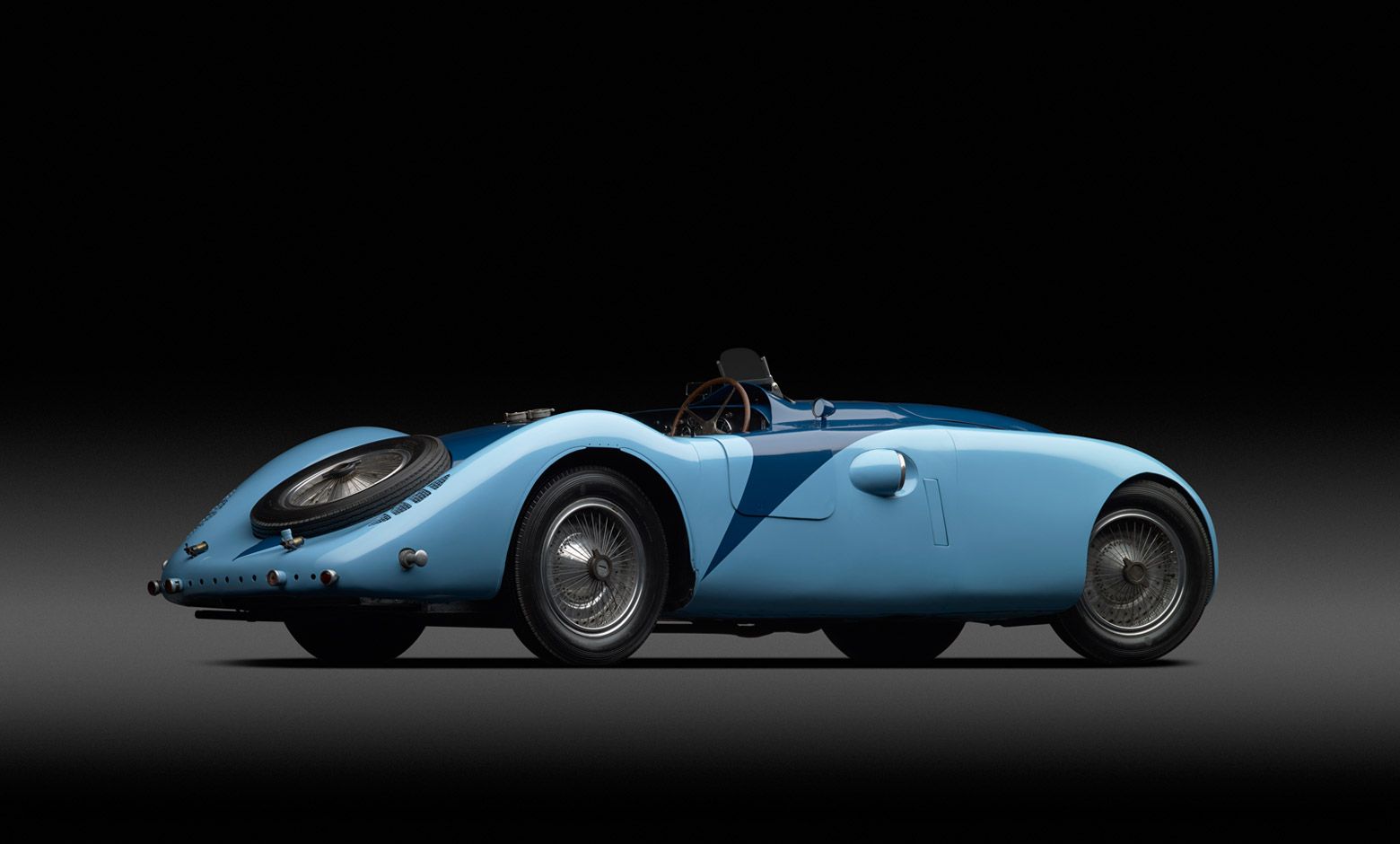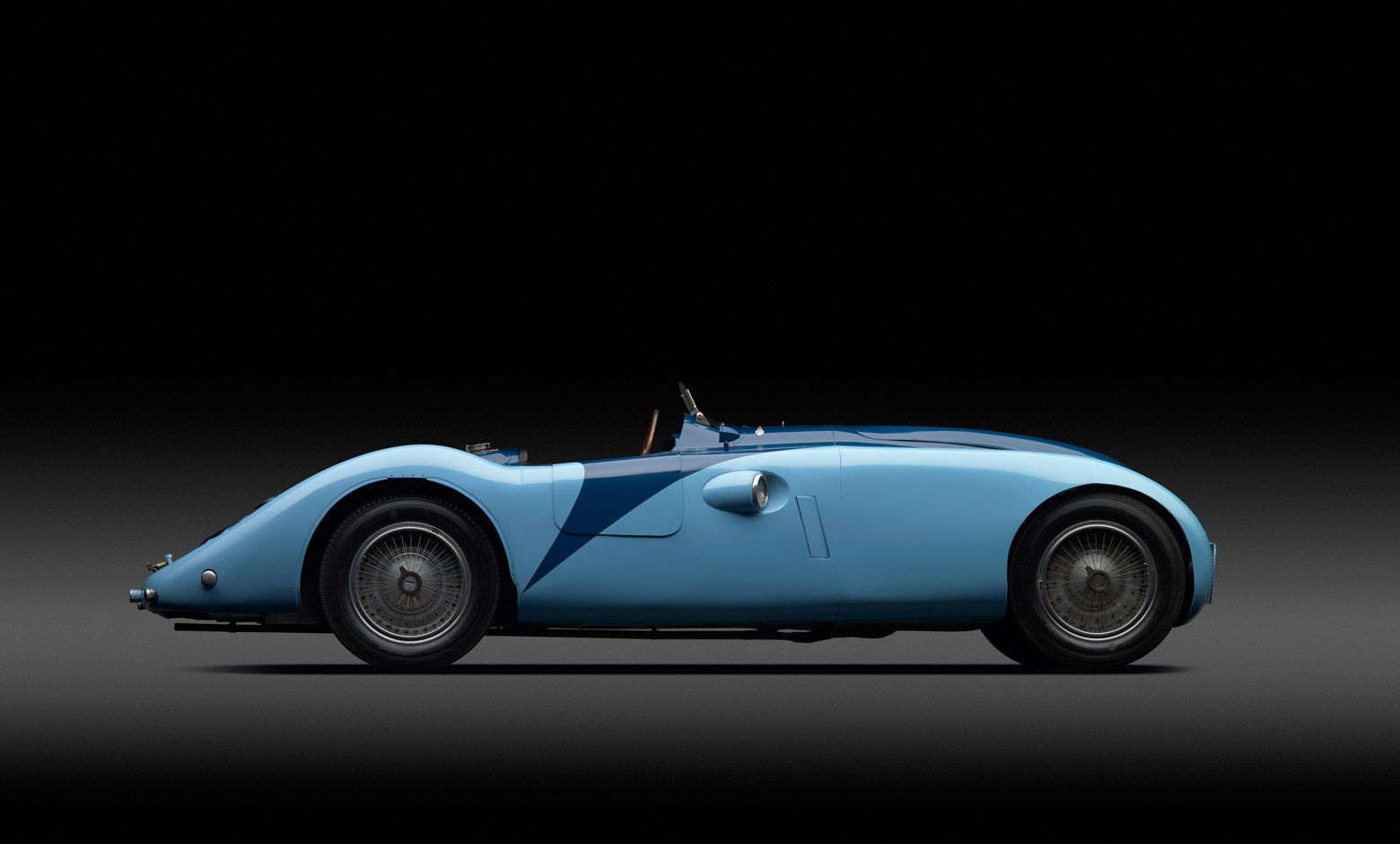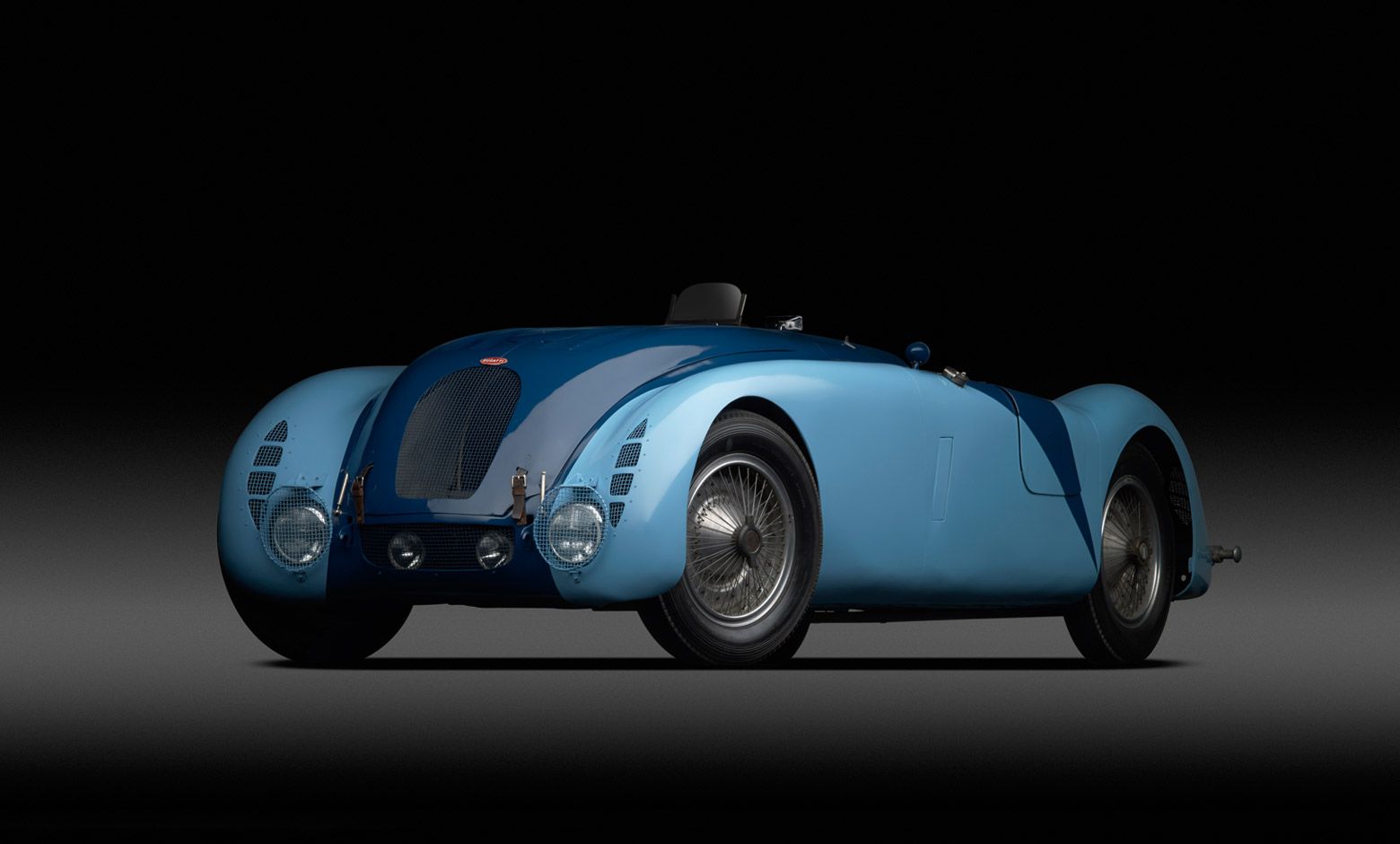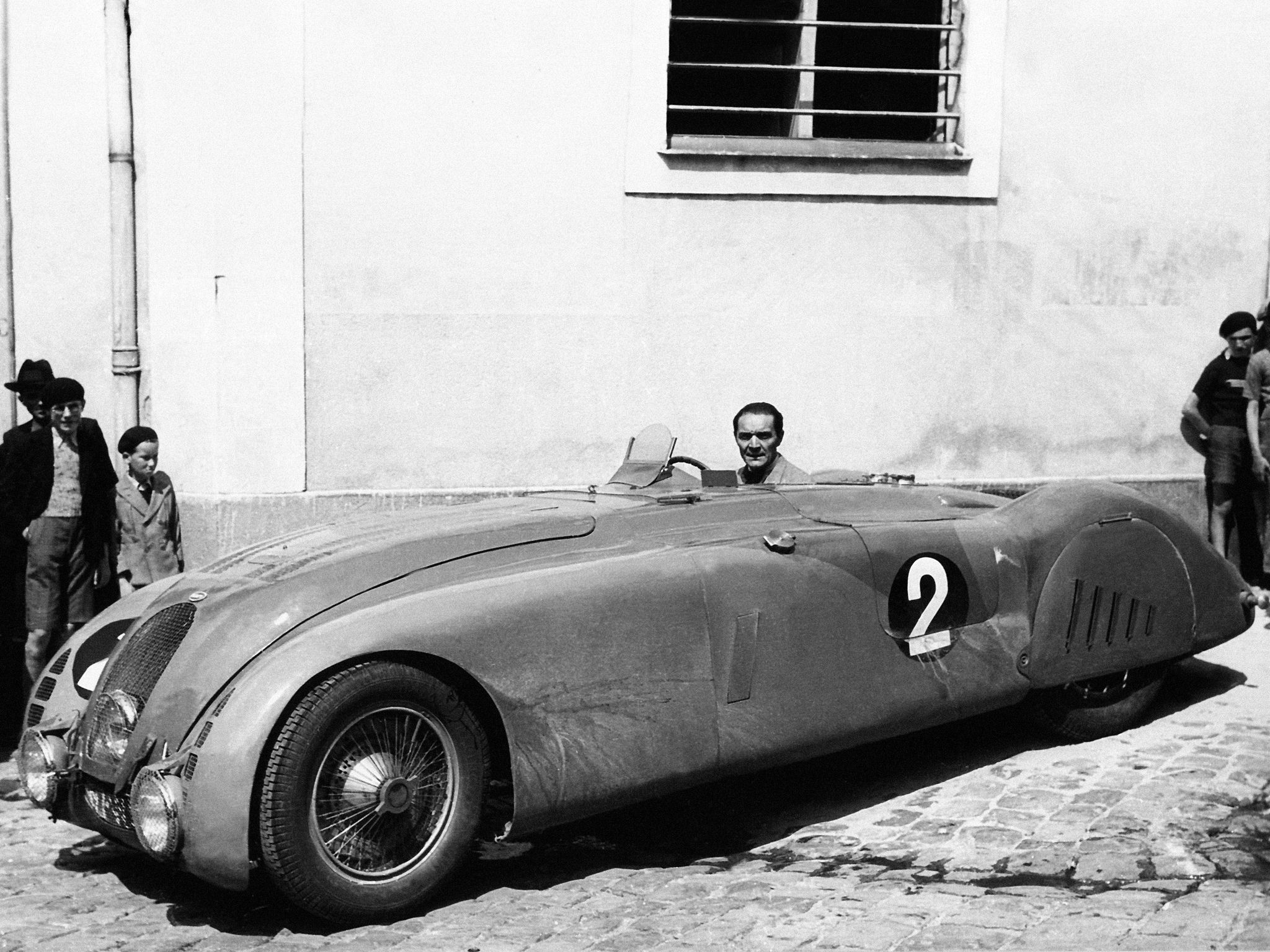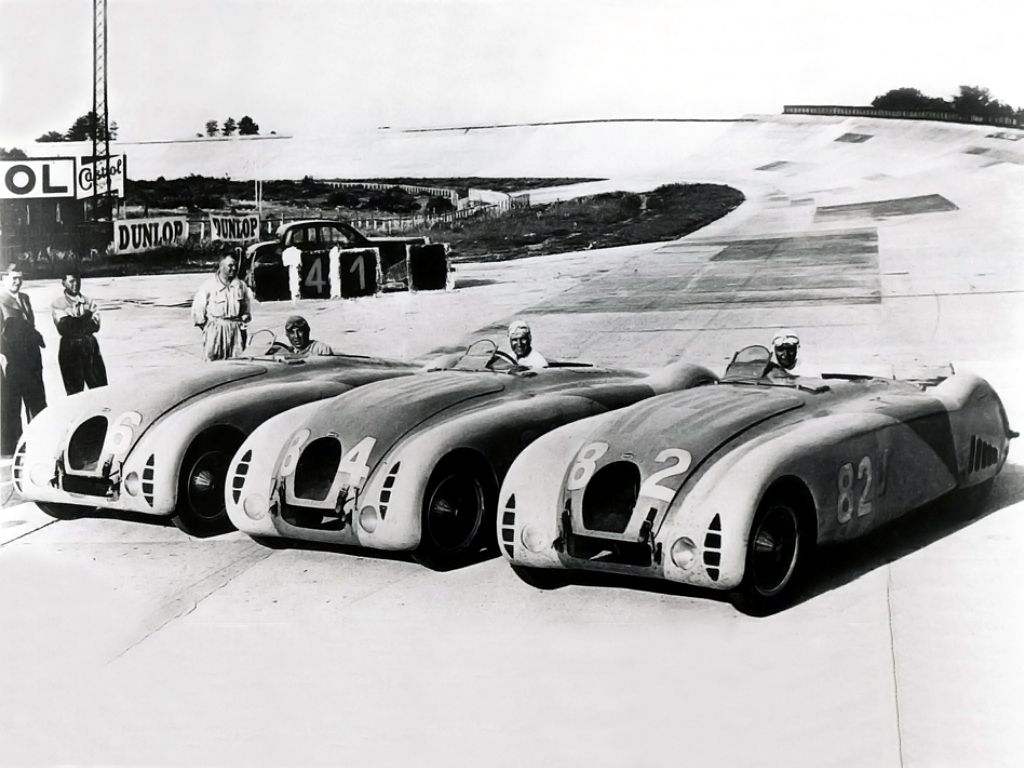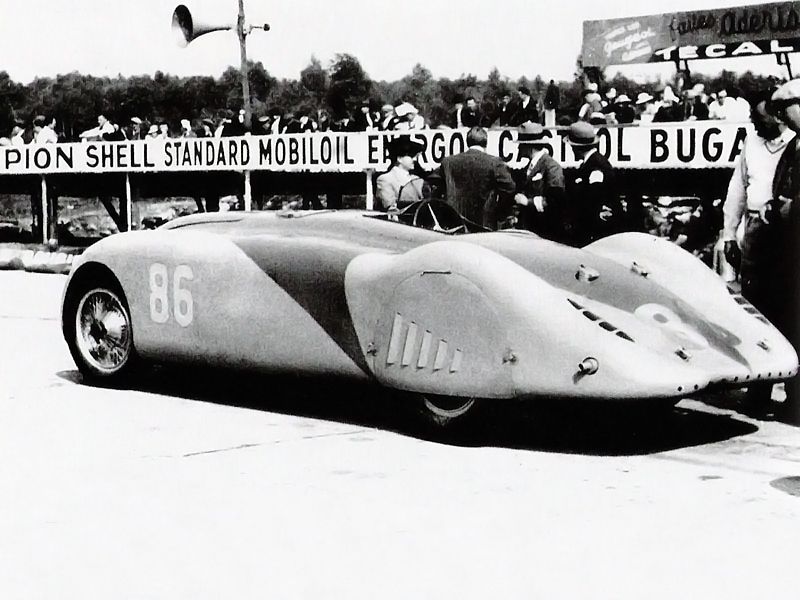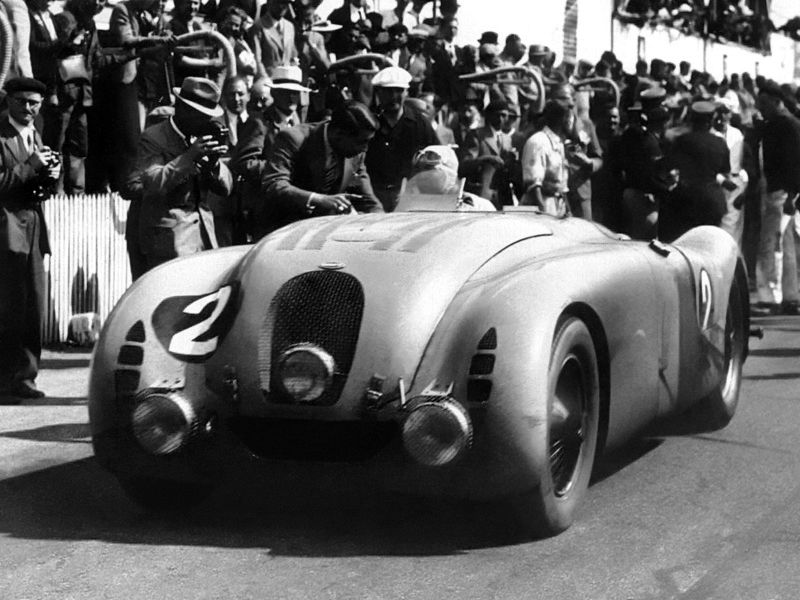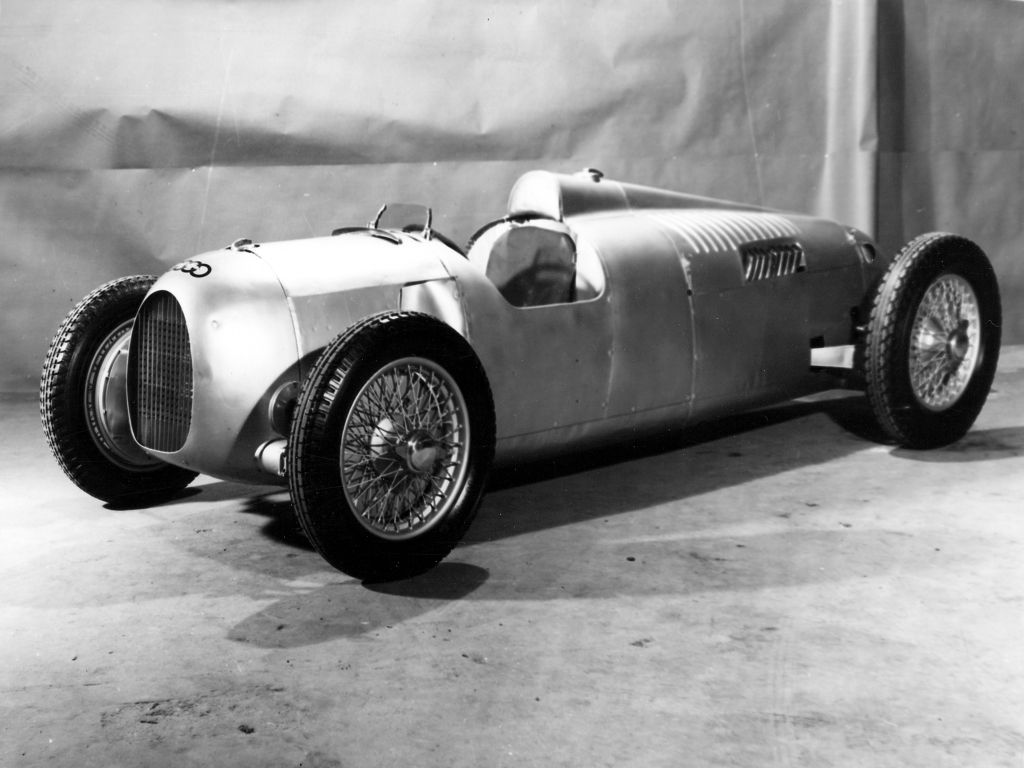Bugatti->ke16 introduced the legendary Type 57 in 1934, laying the groundwork for some of its most iconic cars, including the Atlantic and Atalante. In true Bugatti fashion, the chassis of this high-performance road car was proven on the race track. The Type 57G took to the track in 1937, with an enclosed body that was quickly dubbed the "Tank." The Type 57G did Bugatti proud, winning the French Grand Prix in 1936 and the 24 Hours of Le Mans->ke1591 in 1937 and 1939. The Le Mans victory was the first major international win for Bugatti. Just three Type 57G Tanks were produced, but what the car lacked in production numbers it more than made up for in results. Some accounts say that the Type 57Gs won every major race they were entered in. At the end of the 1939 Le Mans race, Bugatti was 26 miles ahead of the second-place car.
One of the streamliners disappeared after the Paris Auto Salon in 1936, and another Type 57G was destroyed in a tragic testing crash that killed Jean Bugatti shortly after it had won Le Mans in 1939. Legend has it that the last Type 57G Tank survived WWII thanks to the forward-thinking Bugatti family, who buried the vehicle underground for the duration of the conflict.
The shape and paint scheme of the Type 57G Tank also influenced the modern Bugatti Veyron->ke1112, in the form of the first "Legends" limited-edition car introduced in 2013. The new car had very different dimensions, but there's a clear lineage between the two vehicles, most evident with the Legends edition 2013 Bugatti Veyron Grand Sport Vitesse "Jean-Pierre Wimille," whose blue-on-blue livery matches that of the surviving Tank.
Continue reading to learn more about the 1937 Bugatti Type 57 G Tank.
bugatti-type-57-g-tank
- Make: Array
- Model: bugatti-type-57-g-tank
1937 Bugatti Type 57 G Tank
- Make: Array
- Model: 1937 Bugatti Type 57 G Tank
- Horsepower: 200
- Transmission: 4-speed manual
- [do not use] Vehicle Model: Array
Exterior
The most distinctive feature was of course the Type 57G's enclosed body. Streamliners weren’t a new concept in racing at the time, but they were uncommon enough to be seen as intimidating beasts. Though it's unlikely that Bugatti's designer knew it at the time, this car's shape predicted the style of sports cars to come. The smooth, teardrop shape, tapered tail and curved front end predicted British and Italian sports-racers of the 1950s and 1960s with ease. Compared to an Austin-Healey or MGA, though, the Type 57G Tank was a monster.
With a 117-inch wheelbase and wide envelope body, it dwarfed even its contemporary competitors. The lightweight body rode on the frame belonging to the short-wheelbase Type 57S. The mesh-covered air intake at the front of the body was shaped like the Type 57's distinctive grille, so there was no question as to the car's lineage. Doors were cut into the side of the car and wrapped over the top of the sill to improve airflow. The bodywork extended far beyond the long straight-eight engine also, tapering down to a pair of low-mounted headlights.
The third Tank, built in 1939, rode on the Type 57C chassis. It looked very different, with a longer tail and wheelbase.
Interior
The Type 57G's interior was all business, but looked more like an airplane cockpit than a car. A tight cluster of five auxiliary gauges rode to the right of a large wood-rimmed steering wheel, and the flat metal dash also held an array of warning lights and other controls. The shifter loaded directly into the top of the transmission, which protruded into the footwell. The driver got as little windshield as was necessary, to keep the aerodynamics intact; the passenger, if there was one, got none at all.
Drivetrain
The Type 57's straight-eight engine evolved from the Type 49, the car's immediate predecessor. The 3.3-liter, DOHC powerplant was updated with dry-sump lubrication and produced about 200 horsepower. It was essentially the same engine as the road-going Type 57 used. It was designed for sustained high revs. The Tank’s streamlined body improved fuel efficiency as well, enabling it to outlast many of its competitors during long endurance races->ke447. A four-speed manual transmission put the power to the rear wheels. The 1939 Tank, in addition to having a longer wheelbase, was supercharged, thanks to a rule change. Supercharging wasn't allowed in the French Grand Prix in 1937, but by 1939 things had changed. With the new engine, the Type 57G Tank topped out at over 140 mph on the Mulsanne straight.
Bugatti's records are a bit fuzzy on further equipment, but the Type 57G shared the chassis of the Type 57S and gained parts from the outdated Type 59, Bugatti's Grand Prix racer that was mothballed at the end of the 1934 season. A lightweight, hollow front axle was used for weight savings, and reportedly shared wheels with the Type 59.
Prices
Only one Type 57G Tank is known to survive, of the three built. It's the 1937 Le Mans winner, chassis number 57335. As a race car->ke148 with a known and famous winning history, putting a value on this vehicle is just about impossible; it's worth whatever the highest bidder is ready to pay for it. Of course, it may also be beside the point as the Type 57G Tank currently belongs to the Simeone Foundation Museum in Philadelphia, PA, which does not seem to have any intentions of passing it on.
Competition
Auto Union Type B
Although the Bugatti and Auto Union Type B never met on the track, the German streamliner was nevertheless a direct influence on Bugatti's decision to go racing. The rear-engined Auto Union streamliners dominated Grand Prix racing in their day, thanks in part to an absurdly powerful, 295 horsepower rear-mounted 4.4 liter supercharged V16 designed by Ferdinand Porsche.
Conclusion
Bugatti's high-glamor cars were unmistakable and imposing on the road. That reputation for poise and performance was cemented by the company's forays into racing, of which the Type 57G Tank was a very large part. This car was responsible for collecting some of Bugatti's most prestigious victories, and the fact that it did so in such a short time is further testament to its excellence.

